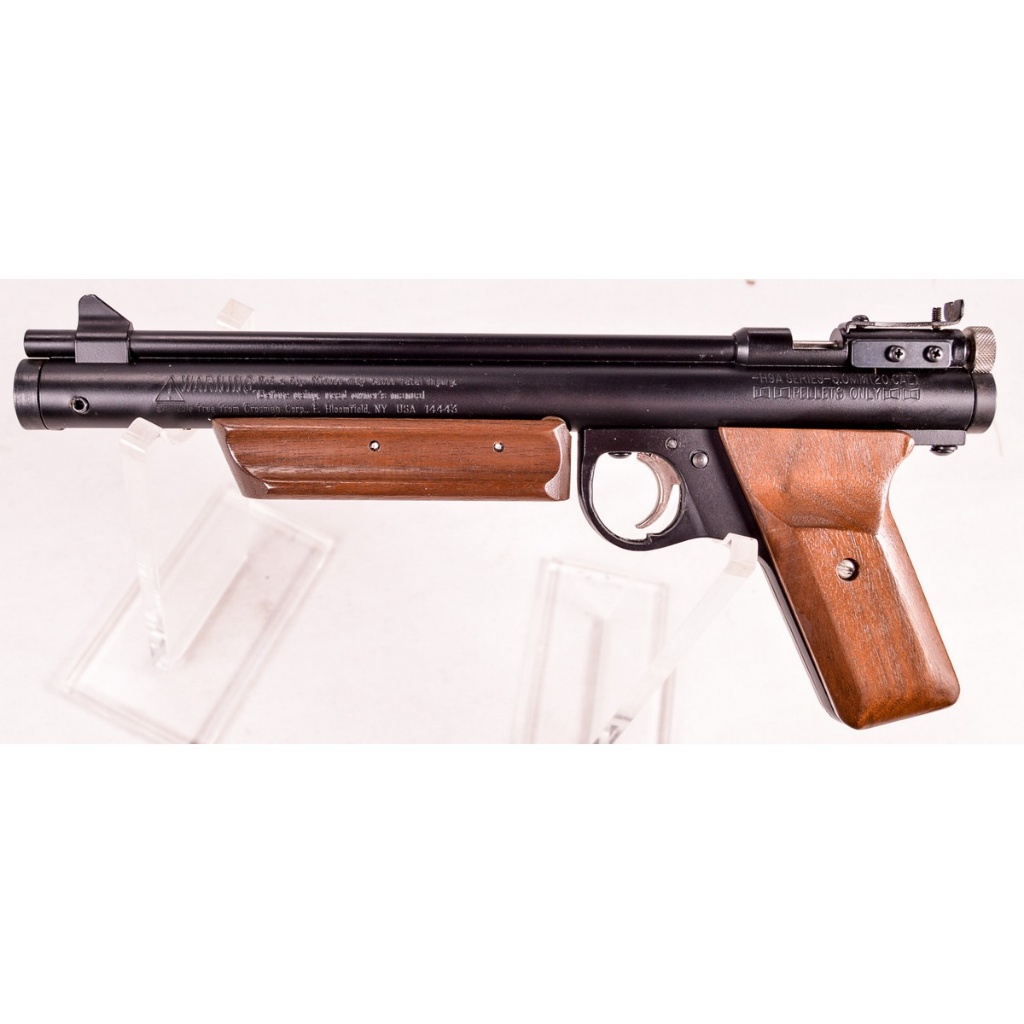Military Tranquilizer Pistol - KEY POINT: SOCOM commissioned a private company to devise what it called an "offensive small arms system." This weapon fires "hotter" ammunition than conventional military bullets.
According to the Navy's official manual, the MK-3 "becomes less effective after firing 24 rounds." "The suppressor insert refreshes the suppressor."
Military Tranquilizer Pistol

Navy SEALs are known for their exotic guns, from machine guns to grenade launchers...and some iconic silent handguns.
Call Of Duty®: Black Ops Cold War: Weapon Overview
The Navy trained his Sea Airland crew in 1962 and immediately sent it to Vietnam to search for the enemy and work with local forces. Navy operators have found the Suppressed Pistol ideal for many of their most covert missions.
“The value of suppressed weapons was noted before the team deployed into combat operations in Vietnam,” SEAL historian Kevin Dockery wrote in his book Special Warfare Special Weapons. I'm here. "But in the early days of the war, very few weapons of that type were available."
At the time, the Department of Defense still viewed silencers as highly specialized tools for individual operations. During World War II, intelligence agencies such as the Office of Strategic Services (the predecessor to the Central Intelligence Agency) were much larger customers.
But this technology was by no means new. Hiram, of Maxim's machine gun fame, is commonly believed to have invented and patented the first silencer for firearms in 1909.
April Live Gun Auction
The sound of a gun firing is caused by gas escaping behind a bullet, much like a car backfiring or opening a bottle of champagne. A device Maxim dubbed a "muffler" works primarily by directing all this smoke elsewhere.
A contemporary U.S. Army study found that the OSS and its British counterparts ordered a variety of suppressed pistols, submachine guns and rifles during the war. And these weapons remained in both military and CIA arsenals long after the conflict ended.
Close ties to the Special Operations Forces and the CIA have allowed the SEALs to acquire some of these guns. However, firearms have become obsolete...and were never intended for use in normal combat.

For example, the CIA has become particularly fond of "Vee" type silencers. This type of suppressor contains a soft rubber or plastic disc that helps seal the gas after the bullet has passed through it.
This Is The Definitive List Of The Best Pellet Guns Of 2019
However, these "fabrics wore off quickly from the stress of the fire," explains Dockery.
SEALs needed a weapon capable of everyday use in the field. As such, the Navy has begun developing alternatives.
In 1967, the Navy SEALs received the first new MK-3 "Silencer". The silencer was mounted on a specially modified 9mm Smith & Wesson Model 39 pistol.
Oppressor. A large spring and O-ring held another insert firmly to the main his tube.
Tranquilizer Rifle Sketch By Adriandis On Deviantart
Gas could still expand within this outer shell when the wipe was blown away.Individual special forces were able to unscrew the entire arrangement and install a new insert in the base.
The weapon itself, called the MK-22, also had rods that prevented the slide from moving back and forth. This feature makes the rifle single-shot, but also eliminates noise from moving parts.
In addition, elite sailors were given a unique subsonic ammunition that did not produce the cracking sound produced when breaking the sound barrier. The pistol quickly became a popular and iconic addition to the SEALs' arsenal.

In Vietnam, Special Forces fired guns to take down lone guards and, more often, kill any animals they might give. Shields called the weapon a "silent puppy." For obvious reasons.
Now This Is A Suggestion I Haven't Seen Yet: Tranquilizer Guns!
"We rarely used silence dogs against people. Intimidating dogs and ducks were by far the most common targets," as an unnamed Seal notes in his book. , Dockery quotes.
After the fighting in Southeast Asia ended, the Navy SEALs kept the pistol quiet. However, the crew was clearly fed up with the consumable sweep his suppressor.
By the 1980s, the Navy had purchased a number of his Heckler & Koch model P9S pistols with new silencers to replace old combinations. A company called Qual-A-Tech made a suppressor that, according to another Air Force test report, collects propellant gases into a fixed chamber.
At the same time, the Pentagon was looking for a new pistol to replace his decades-old M1911. SEALs and fledgling special operations commands weren't thrilled with the resulting 9mm Beretta his pistol.
H&k Usp Socom \\ Metal Gear Solid 4k
SOCOM has commissioned a private company to come up with what it calls an "offensive small arms system." This weapon fires "hotter" ammunition than conventional military bullets.
Companies also had to provide suppressors and lasers for the test guns. Only Heckler & Koch and Colt responded to the request.
SOCOM ended up choosing his H&K proposal. After the selection, the designer changed the pistol (initially he was called EX-23) in different ways.

Of particular note is that the designer has replaced the original box muffler. Knights Armament Company offered a more traditionally shaped device with fixed screens such as the Qual-A-Tech silencer.
Crosman H9a Series Pellet Gun
Most of the new weapons, eventually dubbed the MK-23, were sent to the SEALs. The rifle became "the first caliber .45 [caliber] ... pistol to be adopted by the United States Armed Forces since the venerable Government Model 1911A1," says the official operating manual. Gear-obsessed editors select every product to review. Purchases made through links may incur a commission. why trust us
"Bigot" was the codename for a very interesting and creative (if ultimately impractical) OSS secret weapon developed at the end of World War II. It was his 1911 pistol modified to silently fire his six-inch-long trigger dart.
The OSS (Office of Strategic Services) was the American organization responsible for covert operations behind enemy lines, including espionage, sabotage, and all manner of dastardly cloak-and-dagger projects. Shortly after the war ended, it basically became the CIA. Many of the weapons and attachments in OSS are codenamed, in this case the "bigot" is derived from the weapon's basic action (a spiked mortar reduced to the size of a handgun).
The actual conversion itself was very easy. It consisted of a breech plug that fits into the pistol's chamber and a long rod that is inserted into the barrel and screwed into the breech plug. The stick contained a long firing pin, so that when the pistol's trigger was pulled, the cartridge at the end of the stick would explode.
Weapon Rifle Gun Vector Military Army Handgun Illustration War Rifle Stock Vector Image By ©dihard909.gmail.com #448359238
Bigot's ammunition consisted of a pointed steel his dart with a sliding fin assembly. The tip of the arrow had a .25 ACP blank shell, and the center of the arrow was hollow, a precise diameter to fit snugly on the pistol's barrel rod. To load the weapon simply slide the arrow from the rod into the pistol barrel.
When fired, the firing pin hits an empty .25 cartridge, blowing it the length of the arrow and sealing it at its base. This throws the arrow forward from the gun, trapping all propellant gases within the body of the arrow and making it quiet. Presto! The perfect weapon for covertly killing guards...or maybe not.
These rifles were actually developed and tested by the OSS, but were never used. There's a reason for that. I haven't found a test report on the performance of Bigot's original (and probably never will, given the secrecy of the institution), but I've had the chance to fire off a modern replica of Bigot, and have a little insight into its utility. I was able to get application, or lack thereof.

The event appeared as part of the now-canceled TV show Sons of Guns, and there were many differences between the duplicate system and the original. In addition, a lighter gunpowder charge was used in the reenactment to avoid blowing the arrowhead off. Due to the time constraints of the television production schedule, the arrow design could not be tested and improved to be as strong as the original.
A Tranquilizer Pistol In Sa Would Be... Interesting To Say The Least.
In any case, the maximum range of propagating arrows was about 10 feet. I shot a total of 6 arrows at a target in a glass bowl about 8 feet away. As a result, two arrows hit the glass and broke it, two arrows hit the glass and bounced back, and two arrows no longer hit the glass bowl. Not exactly lethal.
Of course, the original arrow with a better gas seal and more powder would have had a higher muzzle velocity and longer range, but the reason the project was ultimately abandoned was to move fast enough. I think it was because I couldn't. reasonable distance. Some people speculate that the Bigot was designed for casting lines or underwater use.
Post A Comment:
0 comments so far,add yours